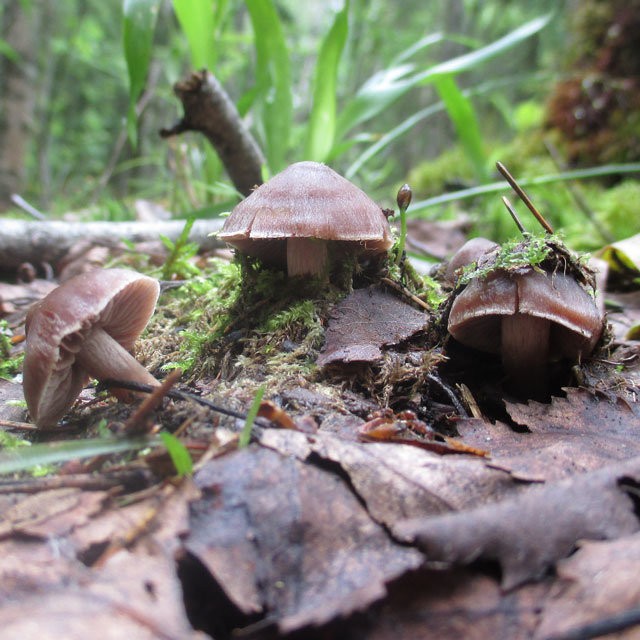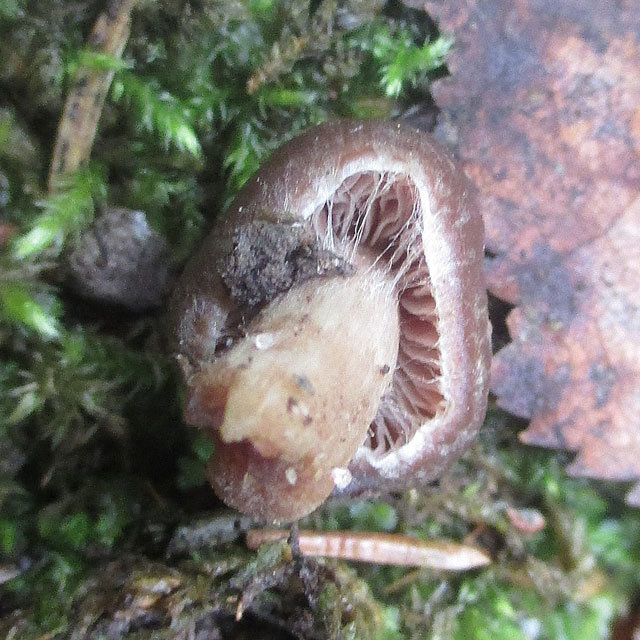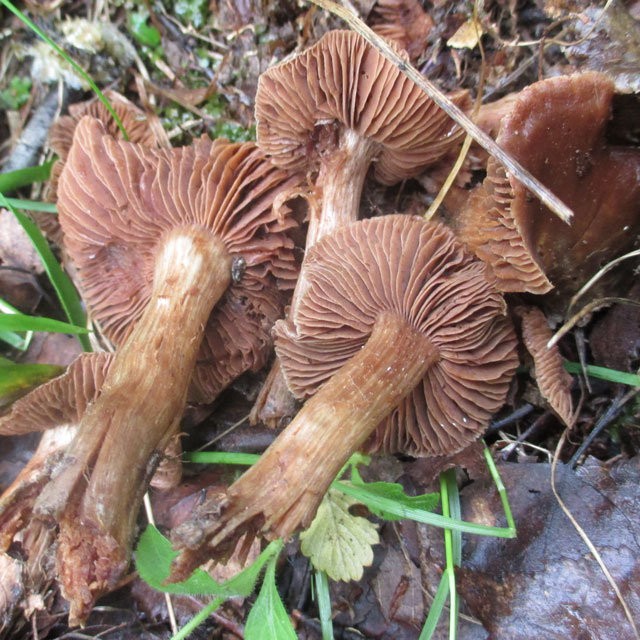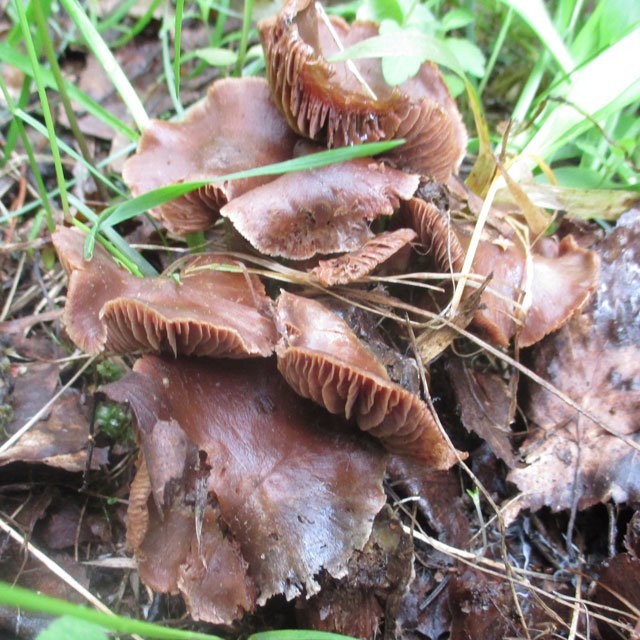Spring cobweb (Cortinarius vernus)
- Division: Basidiomycota (Basidiomycetes)
- Subdivision: Agaricomycotina (Agaricomycetes)
- Class: Agaricomycetes (Agaricomycetes)
- Subclass: Agaricomycetidae (Agaricomycetes)
- Order: Agaricales (Agaric or Lamellar)
- Family: Cortinariaceae (Spiderwebs)
- Genus: Cortinarius (Spiderweb)
- Subgenus: Telamonia
- Type: Cortinarius vernus (Spring cobweb)

head 2-6 (up to 8) cm in diameter, bell-shaped in youth, then procumbent with a lowered edge and a (usually pointed) tubercle, then, flat-prostrate with a wavy edge and a slightly pronounced tubercle (does not always survive to this type). The edges of the cap are smooth or wavy, often torn. The color is brown, dark brown, dark red-brown, black-brown, may be slightly purple, may be lighter towards the edges, with a gray tint, may be with a gray rim around the edge. The surface of the cap is smooth, radially fibrous; the fibers are of a silky nature, not always pronounced. Coverlet cobweb light, torn very early. The remains of the bedspread on the leg are light, or reddish, not always noticeable.

Pulp brownish-whitish, brownish-grayish, lilac shade at the base of the stem, different sources consider it from thin to rather thick, generally medium, like all telamonia. The smell and taste are not pronounced, according to different opinions, from floury to sweetish.
Records infrequent, from adnate with a tooth to slightly decurrent, ocher-brown, gray-brown, with or without a slight lilac tinge, uneven, sinuous. After maturation, the spores are rusty-brown.

spore powder rusty brown. Spores nearly spherical, slightly elliptical, strongly warty, prickly, 7-9 x 5-7 µm, not amyloid.
Leg 3-10 (up to 13) cm high, 0.3-1 cm in diameter, cylindrical, may be slightly club-shaped from below, brownish, grayish, longitudinally fibrous, silky fibers, redness below is possible.

It lives in broad-leaved, spruce and mixed (with broad-leaved trees, or spruce) forests, in parks, in fallen leaves or needles, in moss, in grass, in clearings, along roads, along paths, from April to June.
Bright Red Cobweb (Cortinarius erythrinus) – Some sources (British) consider it even a synonym for spring cobweb, but at the moment (2017) this is not a generally accepted opinion. The view, indeed, is very similar in appearance, the difference is only in the red, purple tones in the plates, there is nothing even close to red in the spring cobweb, except for the possible reddening of the base of the leg.
(Cortinarius uraceus) – The same British sources also consider it a synonym, but this, too, so far, is only their opinion. The stem of this cobweb is dark brown, turning black with age. This species is a mycorrhiza forming species and does not occur in the absence of trees.
(Cortinarius castaneus) – A similar species, but grows in late summer and autumn, does not intersect in time with spring.

Considered inedible. But data on toxicity could not be found.









